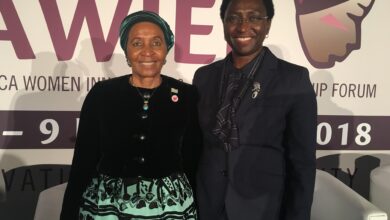Hydrobox: Microgrid Solutions for Rural Africa

Hydrobox is addressing the lack of reliable electricity in rural Africa through modular micro-hydropower systems. These containerized units, co-founded by Thomas Poelmans and John Magiro, use small rivers and streams to generate clean energy with minimal disruption. By combining hydropower with solar energy, Hydrobox ensures a steady power supply, even during seasonal changes.
Key Highlights:
- Energy Access: Over 10,000 homes and businesses in Kenya now have electricity, with a goal to serve 1 million users by 2030.
- Hybrid Model: Blends hydropower and solar energy for 24/7 electricity.
- Fast Deployment: Prefabricated units install in under a year, generating 100 kW to 5 MW of power.
- Energy-as-a-Service: Subscription-based plans eliminate upfront costs for communities.
- Community Impact: Supports education, healthcare, and local businesses while reducing reliance on fossil fuels.
Hydrobox’s approach combines local insights with scalable solutions, making it a practical way to expand energy access in underserved regions of Africa.
Founders’ Mission and Modular Design
The Vision Behind Hydrobox

Thomas Poelmans and John Magiro joined forces to address one of Africa’s most pressing issues: energy poverty. By combining international technical expertise with a deep understanding of local challenges, they created a solution that bridges the gap between complex engineering needs and the realities of rural communities.
Their mission goes far beyond simply delivering electricity. They aim to uplift communities by enabling better education, improving healthcare access, and fostering local entrepreneurship. Reliable electricity, in their view, isn’t just about lighting homes; it’s a cornerstone for broader community development.
Understanding that extending traditional power grids to remote areas is prohibitively expensive, they developed a cost-efficient alternative. Their solution delivers clean, dependable energy at a fraction of the cost and time required by conventional systems.
Hydrobox’s unique shareholder structure – including employees, European business angels, crowd investors, and institutional backers – reflects their commitment to community-centered growth. This dedication to addressing energy poverty is at the heart of Hydrobox’s modular design approach.
Modular and Containerized Hydropower Systems
Hydrobox’s vision comes to life through its modular design, which directly tackles the challenges of rural electrification. Instead of constructing large, site-specific hydropower plants, the company produces prefabricated, ready-to-deploy units. These containerized systems are fully equipped with turbines, generators, control systems, and remote monitoring technology – all packaged in a standardized format.
This modular strategy drastically reduces installation time, cutting it down to less than a year – an impressive contrast to the years or even decades required for traditional hydropower projects. The containerized design also allows these units to be transported to remote and hard-to-reach areas, where building conventional infrastructure would be nearly impossible.
Each unit generates between 100 kW and 5 MW of power, making it scalable to meet the specific needs of a community. Smaller units can power homes, schools, small businesses, and farms, while larger setups can support entire districts or even feed electricity back into national grids.
The modular design also allows for gradual scaling as communities grow and their energy demands increase. Instead of overbuilding or underdelivering, Hydrobox starts with a solution tailored to the community’s current needs and can expand incrementally. This approach not only keeps initial costs manageable but also ensures flexibility for future growth.
Hydrobox’s run-of-river design optimizes local water resources while minimizing environmental impact, making it a sustainable choice for rural electrification.
In 2023, the effectiveness of Hydrobox’s approach was highlighted when the company secured $9 million in debt funding from FMO and EDFI Management Company. This funding supported the expansion of eight hydro-powered mini-grids in Kenya, directly benefiting over 10,000 people and local businesses. These projects align with Kenya’s Vision 2030, which aims for universal access to electricity.
To ensure reliability, each modular unit integrates IoT technology and smart sensors, enabling real-time monitoring and management from anywhere. This tech-driven approach minimizes downtime, enhances operational efficiency, and ensures consistent performance – especially crucial in remote areas where on-site technical support may be limited.
Hydrobox’s Technical Features
Hybrid Solar-Hydro Microgrid Model
Hydrobox integrates hydropower and solar energy to deliver reliable, 24/7 electricity through intelligent load balancing. During sunny hours, solar panels handle most of the energy demand, while the hydropower system provides a consistent baseline. When solar output drops in the evening or during cloudy weather, the run-of-river hydropower system steps in to maintain uninterrupted power. This dual-source approach avoids the power shortages often seen with single-source renewable systems and ensures steady energy availability under various conditions.
This hybrid design is particularly effective in adapting to seasonal changes. For example, hydropower output increases during rainy periods, while solar energy takes the lead during drier months. At Hydrobox’s Kahinduini plant in Kenya, the system has been scaled to 688 kW and is connected to the national grid. This setup not only meets local energy needs but also allows excess power to be sold to the grid, demonstrating the flexibility of hybrid systems to support both community-level and national energy demands.
The combined solar-hydro model also strengthens resilience against climate variability. While traditional hydropower systems can falter during droughts and solar installations face challenges during prolonged cloudy weather, Hydrobox’s approach ensures consistent energy production. This reliability is especially critical for powering essential services like healthcare centers, schools, and small businesses in rural areas.
Real-Time Monitoring and Energy Management
Hydrobox installations feature advanced smart sensors and AI-driven tools that provide real-time performance monitoring, anomaly detection, and energy production adjustments.
A standout feature is dynamic load management, which automatically balances electricity distribution among homes, businesses, and community facilities. During peak demand, the system prioritizes critical services such as healthcare centers and schools, while managing residential loads to prevent overloading. This proactive energy management enhances reliability, reducing disruptions for communities. For rural areas where on-site support may take time to arrive, this remote oversight is invaluable.
The system also alerts technicians to issues like unusual turbine vibrations or decreased solar output, allowing for quick adjustments to prevent equipment damage. Additionally, the data collected helps identify peak usage periods and consumption trends. These insights guide system upgrades and empower communities to make smarter energy decisions. This seamless oversight supports Hydrobox’s subscription-based energy model by ensuring consistent service and minimizing maintenance delays.
Energy-as-a-Service Model
Hydrobox’s Energy-as-a-Service (EaaS) model complements its technical advancements by making modern electricity more accessible. Instead of requiring communities to bear the high upfront costs of purchasing and maintaining their own power systems, Hydrobox offers electricity through subscription-based or pay-as-you-go plans.
This model eliminates financial barriers while providing ongoing technical support. With subscription plans covering power supply, maintenance, and upgrades, communities can access reliable electricity without large initial investments.
The EaaS model is particularly beneficial for small businesses and entrepreneurs in rural areas. It allows them to access electricity at manageable costs that can scale with their needs, enabling growth without the burden of upfront capital expenses.
Hydrobox’s projects in Kenya highlight the success of this model. Supported by funding from FMO and ElectriFI, Hydrobox’s mini-grids have brought electricity to 2,582 households, benefiting over 10,000 people. These projects have also reduced reliance on fossil fuels and created local jobs.
Impact on Rural Communities
Increased Access to Reliable Electricity
At its Kangema pilot site near Nairobi, Hydrobox has transformed energy access. Starting with a 25 kW unit that powered 250 homes (about 1,000 people), the system expanded to a 71 kW unit serving 2,040 people across a 15.5-mile network – all without relying on Kenya’s national grid. This is a big deal, especially since only half of rural Kenyans have dependable electricity, according to the World Bank. With this improved access, students can study after dark with electric lights instead of kerosene lamps, and shopkeepers can stay open longer, boosting both education and local incomes.
Hydrobox is scaling up its efforts with additional mini-grids across Kenya, targeting areas where extending the national grid isn’t financially viable. A standout example is the Gitugu hydro plant in Murang’a County, which delivers 533 kW of hydropower alongside 50 kW of solar power. This hybrid solution ensures a steady energy supply year-round, even when water flow or sunshine fluctuates. These developments are laying the groundwork for stronger local economies and thriving communities.
Economic and Social Improvements
Hydrobox’s impact goes far beyond simply lighting homes – it’s fueling broader economic and social progress. By powering everything from factories and farms to schools, hospitals, and households, Hydrobox supports a diverse range of users. This variety creates stable revenue streams, which helps keep electricity affordable for smaller consumers.
Job creation is another key benefit. Hydrobox prioritizes hiring locally for customer service and technical support, ensuring the community plays an active role in its operations. Construction and installation phases create temporary jobs, while ongoing maintenance and support provide permanent employment opportunities. On top of that, the company’s profit-sharing model ensures that the economic gains are shared directly with the communities it serves.
Reliable energy opens doors for growth and innovation. Farmers can now use electric pumps and processing equipment to increase productivity and boost crop yields. Healthcare facilities gain the ability to power vital medical equipment and store vaccines properly, while schools benefit from electric lighting and technology that enhance learning environments.
Hydrobox’s approach also reduces costs for rural households. By tapping into local rivers for renewable energy, the need for expensive diesel generators is eliminated, cutting ongoing fuel expenses. With lower tariffs than national grid operators and no transmission losses typical of centralized systems, electricity becomes more affordable. Families can replace kerosene lamps with electric lights, reducing indoor air pollution and health risks. Plus, access to television and the internet connects them to new economic and educational opportunities.
sbb-itb-dd089af
Challenges and Future Plans
Barriers in Rural Electrification
Hydrobox faces several hurdles in its mission to bring electricity to rural areas. One of the biggest challenges is funding – each mini-grid requires a large upfront investment to get off the ground.
Regulatory obstacles add another layer of complexity. Hydrobox must navigate a maze of licensing requirements for independent power production, adhere to national grid interconnection standards, and meet local environmental and safety regulations. These processes are not only time-consuming but also demand extensive coordination with government agencies.
On top of that, the technical side of renewable energy integration in remote areas presents its own set of difficulties. Choosing the right sites, adapting containerized systems to local conditions, and ensuring effective remote monitoring are critical – especially in regions with limited access to technicians and poor infrastructure. These barriers highlight the challenges Hydrobox must address as it works to scale its operations.
Scaling and Future Plans
Hydrobox is committed to expanding rural electrification, and its approach combines strategic partnerships with flexible technology. In 2024, the company secured $9 million in debt financing from FMO and EDFI Management Company. This funding will support the development of eight mini-grids in Kenya, which are expected to power 2,582 households and positively impact over 10,000 people.
“The importance of strong partnerships and a robust project pipeline for scaling impact”, says Thomas Poelmans, CEO and co-founder.
Poelmans also emphasizes the role of creative financing, community involvement, and technical flexibility in achieving Hydrobox’s ambitious goal of reaching one million end-users by 2030.
Building on its success in Kenya, Hydrobox is setting its sights on other African markets. The company plans to expand into countries like the Democratic Republic of Congo and Cameroon, where large rural populations still lack access to the grid. While these regions face challenges similar to Kenya’s, they also hold immense potential for growth.
Partnerships remain at the heart of Hydrobox’s growth strategy. Beyond working with international investors like FMO and EDFI Management Company, Hydrobox collaborates with local stakeholders and anchor clients – such as factories and farms – to secure funding, technical know-how, and market opportunities.
A key factor in Hydrobox’s ability to scale quickly is its modular, containerized system design. These units can be installed in under a year and come with relatively low installation costs. Once the necessary funding and regulatory clearances are in place, Hydrobox can adapt its solutions to fit the needs of various communities, regardless of size.
South Africa Pioneers Micro-Hydro Power
Conclusion: Hydrobox’s Role in Africa’s Energy Future
Hydrobox’s containerized hydropower systems have already brought electricity to over 10,000 people in Kenya, growing from powering 250 homes in Kangema to serving more than 2,000 individuals. This modular approach to renewable energy offers a fresh way to tackle rural electrification challenges across Africa, showcasing its potential for scalability.
The hybrid microgrid technology employed by Hydrobox is designed to adapt to seasonal variations, using real-time IoT monitoring to ensure consistent power delivery. This reliability is especially important in remote areas where extending traditional grids is often impractical. These systems provide dependable energy solutions in places where traditional infrastructure falls short.
A recent $9 million investment from FMO and EDFI Management Company has further strengthened Hydrobox’s Energy-as-a-Service model. This funding supports the development of eight new mini-grids, which are expected to bring electricity to an additional 10,000 people. By addressing the needs of households, small businesses, and anchor clients, Hydrobox demonstrates a sustainable approach to rural energy delivery.
Looking ahead, Hydrobox has ambitious goals, aiming to reach one million end-users by 2030. Plans are already in motion to expand into markets like the Democratic Republic of Congo and Cameroon, further solidifying its role in closing Africa’s rural energy gap.
By reducing reliance on fossil fuels and utilizing local water resources, Hydrobox not only meets energy demands but also contributes to broader climate and economic objectives. As highlighted by Tech In Africa, solutions like Hydrobox’s modular microgrids are crucial for addressing the energy access gap, especially in areas where reliable electricity remains out of reach for much of the rural population.
Hydrobox’s journey underscores how renewable energy solutions can be both technologically advanced and practical in difficult environments. By blending local ingenuity – like founder John Magiro’s initial microhydro project – with strategic global partnerships, Hydrobox offers a model that can be replicated to promote sustainable rural development across Africa.
FAQs
How does Hydrobox’s hybrid solar-hydro microgrid provide reliable electricity year-round?
Hydrobox has developed a microgrid model that blends hydropower with solar energy, creating a hybrid system designed to deliver consistent electricity year-round. This smart combination allows the system to adjust to seasonal shifts – like reduced water flow during dry seasons – by leaning more on solar power when needed.
This setup doesn’t just provide a reliable energy supply; it also prioritizes clean energy, contributing to a more sustainable future. Specifically designed to address the energy needs of rural African communities, Hydrobox’s solution helps drive economic development while improving access to vital services.
How does Hydrobox’s Energy-as-a-Service model financially benefit rural communities compared to traditional power systems?
Hydrobox’s Energy-as-a-Service model brings a fresh approach to powering rural communities by making energy both affordable and dependable. Unlike the traditional systems that demand steep upfront costs and constant maintenance, Hydrobox adopts a pay-as-you-go setup. This approach not only lowers financial barriers but also makes energy access more flexible and easier to manage within tight budgets.
By combining hydropower with microgrids, the model ensures a steady supply of electricity. This significantly cuts down the need for costly and polluting options like diesel generators. Over time, this system doesn’t just save money – it helps businesses and households thrive, creating opportunities for local economic growth.
What obstacles does Hydrobox face in bringing its hydropower microgrid solutions to more African countries, and how is it addressing them?
Hydrobox encounters a range of obstacles in bringing its hydropower microgrid solutions to more regions across Africa. These include limited infrastructure, navigating complex regulations, and securing the funding needed for larger projects. On top of that, adjusting their technology to suit various local environments and actively involving communities adds another layer of complexity.
To address these issues, Hydrobox emphasizes building partnerships with local governments, NGOs, and private investors. Their approach also includes developing modular and scalable systems, allowing them to adapt their solutions to different settings without compromising on cost-effectiveness or performance. By working closely with local communities, Hydrobox ensures its projects deliver long-term benefits and meet the needs of those they serve.






